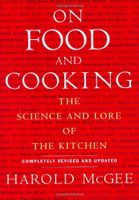Advertisement
The Cooking Liquid
By Harold McGee
Published 2004
The quality of cooked beans and the time it takes to cook them depend on the cooking liquid. In vegetable cooking, large volumes of vigorously boiling water minimize enzyme damage to vitamins and pigments by keeping the temperature high when the vegetables are added. Long-cooked legumes are a different story. The greater the volume of cooking water, the more color, flavor, and nutrients are leached out of the beans, and the more they’re diluted. So these seeds are best cooked in just enough water for them to soak up and to cook in. And though boiling temperatures speed cooking, the turbulence of boiling water can damage the seed coats and cause the beans to disintegrate; lower temperatures (180–200°F/80–93°C) are slower but gentler.


